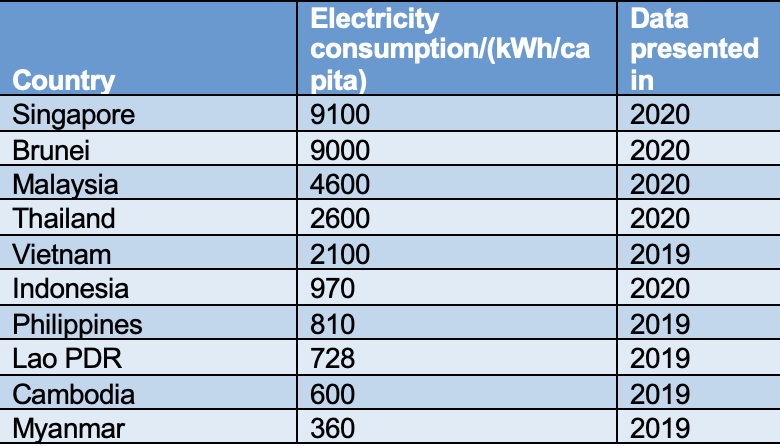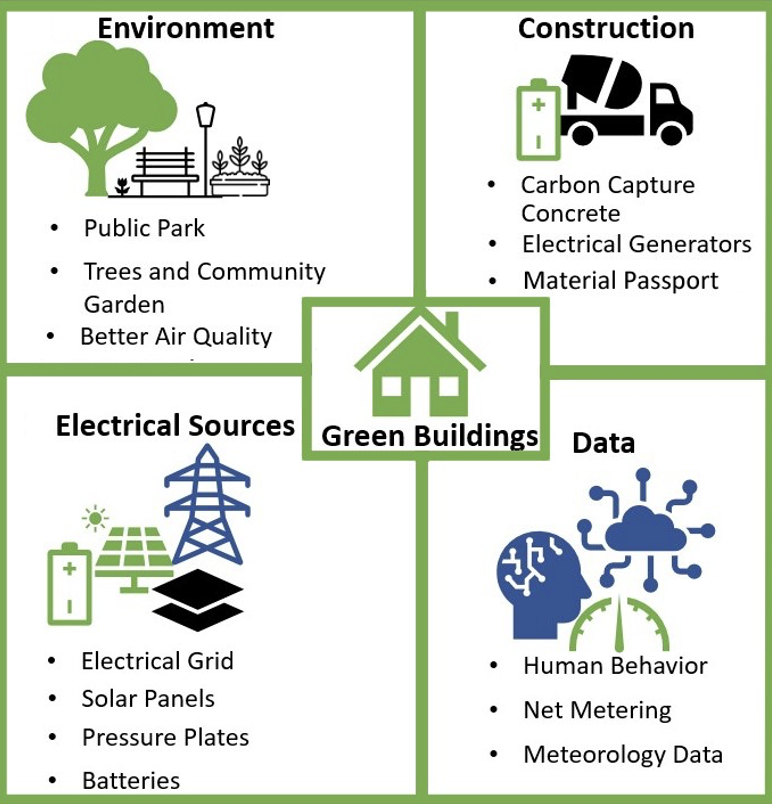Menu
Ever since the re-establishment of Brunei Darussalam National Council on Climate Change (BNCCC) and Brunei Climate Change Secretariat (BCCS) in July 2018, the country’s commitment and objectives in alleviating climate change impact have been emphasised through the release of Brunei Darussalam National Climate Change Policy (BNCCP).
Two of the ten key strategies under the BNCCP are to improve power management and climate resilience and adaptation. Energy efficiency falls under both categories to a certain extent.
The main supply of power in Brunei Darussalam is heavily reliant on fossil fuels, with a 99.9% share or 889 MW from seven gas and one diesel power plant, contributing 55.9% of the nation’s GHG emissions. The electricity demand had grown by 14.3% between 2010 and 2018, and the heavy subsidies tariff also contributed to the increase. Recently, the power management strategy, such as energy standards on both supply and demand sides, has been considered to reduce GHG emissions by at least 10%.
Brunei Darussalam’s Energy Efficiency Progress
The average annual electricity consumption per capita in Brunei Darussalam is about 9,000 kWh in 2020, coming second after Singapore, the highest in the Southeast Asia region, as shown in Table 1. Aside from the top three energy-intensive users among the ASEAN Member States (AMS), the residential and commercial buildings took a large portion of the energy supply, as shown in Figure 1. Their share is consistently above 60% every year, highlighting the need for energy efficiency measures.

 Figure 1: Annual Electricity Consumption per capita in Brunei Darussalam by sectors from 2010 to 2020
Figure 1: Annual Electricity Consumption per capita in Brunei Darussalam by sectors from 2010 to 2020In June 2021, Brunei’s Ministry of Energy announced a new Energy Efficiency (Standards and Labelling) Order 2021 (SLO). This standard would require manufacturers, suppliers, wholesalers, and retailers in Brunei Darussalam to import and sell electrical appliances that meet consumers’ Minimum Energy Performance Standards. The involved parties and goods will have to be registered to the authority, which will be chosen and published in the Gazette, to be able to sell eco-friendly goods. The license will be valid for three years. Air conditioning systems will be the main priority, accounting for about 60% of electricity consumption in buildings, followed by other highly inefficient electrical appliances. This plan is expected to reduce the country’s energy intensity by 45% from 2005 levels by 2035.
In July 2021, the Ministry of Energy also audited government and commercial buildings’ energy performance, 13 buildings located in Temburong District. The audited building owners were given a Building Energy Label Certificates (BELC). Additionally, the Temburong District Office has been installed with 100 kWp of clean energy, a total of 255 solar panels, with a payback period of 9 years as part of the government’s move to mitigate greenhouse gas emissions within the building sector, marking the country’s first solar-powered government building.
The energy analysis was performed under the BELC. It evaluates the building’s energy demand and provides recommendations to improve occupants’ comfort while reducing overall energy consumption. Another assessment tool is the Brunei Accredited Green Unified Seal (BAGUS), launched in March 2016, assesses sustainability in non-residential buildings through the energy efficiency index (EEI). It awards the BAGUS seal to buildings that achieve a 15% annual energy consumption reduction.
Challenges of Existing Policies
The policies, as mentioned earlier, offer many benefits, respective to their technical measures. For instance, SLO focuses on active strategies: replacing old appliances with new energy-efficient appliances. Passive energy strategies such as BELC comprise buildings’ walls, windows and roofs, elements that provide shading, ventilation and insulation. Smart energy management systems activate specific appliances to improve productive activities and conserve energy based on temperature, lighting and motions within rooms. But a few obstacles made it difficult for the general public to pursue green or energy-efficient building development. The key factors are the lack of incentives, knowledge and human behaviour.
Despite the benefits, such as the potential energy savings of up to 40% throughout their lifetime, green buildings require at least 5% more in capital cost than traditional buildings to be designed and built, which leads some people to be hesitant to make decisions. And often, this extra investment overshadowed the other financial benefits, e.g., increasing market price throughout its lifespan and lower electricity bills that will offset the upfront cost.
The limited coverage of the policy is also a significant issue. For example, the past implementations of BELC only covered commercial and government buildings, 13 in total, which speaks volumes about the untapped residential sectors.
To conclude, energy demand is shaped by conventional buildings’ design, electricity prices, and the standard of living, resulting in high energy consumption in the residential and industrial sectors. In human psychology, changing habits and adapting to the new norm or any tasks, in reality, is complex and takes an immense amount of time.
Large community-scale Grid-connected Green Public Housings
With all of these challenges laid out, the government of Brunei Darussalam can solve them by allocating their funds to building a large community-scale grid-connected green public housing in an optimal location for occupants to travel to their jobs or any activity without geographical burden, as illustrated in Figure 2. The tenants can temporarily live in this community to get a general idea or inspiration of how their existing homes, offices, or potential new homes will be retrofitted or built into low-carbon buildings.
The government of Brunei Darussalam should provide incentives to building owners to retrofit their homes either through cost-effective active or passive energy design strategies. The architects have to comply with the energy efficiency standards and practices. Old appliances can be sold to the government and subsidize users with new efficient appliances. In addition to the construction practices and materials selection, the government of Brunei Darussalam could also implement a buildings material passport that reports specific materials and uses of a particular part of the building, including lifespan and recyclable options available depending on their conditions. The materials in this world live in a closed system, just like the conservation of energy.
The access to the park and garden, along with surrounding trees, will improve the tenants’ physical and mental health while providing energy through pressure plates installed in the public walkways. If there are recycling facilities within Brunei, such technologies can even be used as an R&D facility to improve the building environment and avoid material scarcity.
This idea where a prototype of green public housing is integrated with the existing energy efficiency policies would allow the government to assess the effectiveness of policies. At the same time, this model could be a landmark for the community to spread word of mouth to promote energy-saving practices, which could be replicated nationwide.

